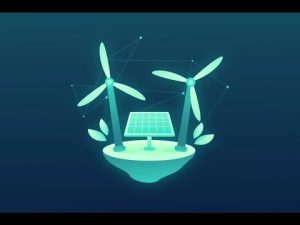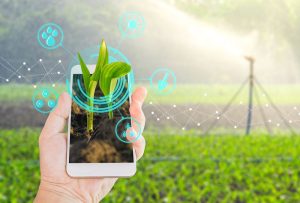The fight against climate change has become one of the most pressing issues of our time. As global temperatures rise, natural resources dwindle, and ecosystems face irreversible damage, there’s an increasing demand for solutions that can protect the environment while maintaining economic and technological progress. Enter sustainable technology — a field that leverages innovation to reduce human impact on the planet.
Sustainable tech innovations span a broad range of industries, from energy and transportation to agriculture and waste management. Each innovation plays a role in reducing carbon footprints, improving resource efficiency, and ensuring that economic growth aligns with environmental health.
Solar Power Tech Gets Smarter
Solar power is no longer just a futuristic idea; it’s a major player in global energy production. Over the last decade, solar technology has evolved rapidly, making it more efficient, affordable, and integrated into everyday life. While traditional solar panels made from silicon remain the dominant choice, newer innovations are changing the game, making solar energy even more accessible.
Perovskite Solar Cells: A Game Changer

One of the most exciting developments in solar technology is the rise of perovskite solar cells. These cells are made from a material called perovskite, which can absorb sunlight more effectively than traditional silicon-based panels. Perovskite solar cells are cheaper to produce, more flexible, and can be manufactured at a fraction of the cost. Researchers believe that perovskite technology could lower the cost of solar energy while increasing efficiency levels.
Case Study: Oxford PV, a solar startup, has been making headlines with its perovskite-silicon tandem solar cells. These tandem cells combine the efficiency of silicon with the superior light absorption properties of perovskite. By using this approach, Oxford PV has achieved solar efficiencies of over 29%, a significant leap from conventional solar cells, and they’re working on bringing this technology to large-scale production.
Solar Windows: Harnessing Energy from Buildings
Another breakthrough is solar windows, which function as both windows and solar panels. These transparent windows can convert sunlight into electricity without blocking natural light or obstructing the view. This means that buildings, especially in urban areas, can generate their own clean energy without the need for bulky rooftop panels.
An example of this innovation is Ubiquitous Energy, a company that has developed an ultra-thin, transparent solar coating. When applied to windows, it allows for energy generation while maintaining the aesthetic integrity of the building. This technology has enormous potential for residential, commercial, and industrial buildings, offering a way to offset energy consumption in real-time.
Green Hydrogen: Fuel of the Future
Hydrogen has long been seen as a potential alternative fuel source, and the development of green hydrogen technology is positioning it to play a critical role in decarbonizing the global economy. Unlike traditional hydrogen production methods, which release carbon emissions, green hydrogen is produced through the electrolysis of water using electricity from renewable sources.
The Promise of Green Hydrogen
Green hydrogen holds the promise of replacing fossil fuels in industries that are otherwise difficult to decarbonize, such as heavy manufacturing, long-haul transportation, and aviation. By using electricity from wind, solar, or hydroelectric power to split water molecules, green hydrogen can be produced in a carbon-neutral manner.
Case Study: The H2 Green Steel Project in Sweden is one of the first large-scale attempts to use green hydrogen for steel production. This innovative project, backed by major investors like Volvo and SSAB, aims to create steel without emitting carbon dioxide. Instead of using coking coal, they plan to use green hydrogen to reduce iron ore, which could transform the steel industry and drastically cut global emissions.
Challenges and Future Outlook
Despite its promise, green hydrogen faces significant challenges. It requires substantial amounts of renewable energy, and the infrastructure for storage and transportation is still under development. However, as renewable energy capacity grows and technology continues to improve, green hydrogen could become a cornerstone of the global transition to a low-carbon economy.
Electric Vehicles (EVs) and Charging Advancements
The shift from fossil fuel-powered vehicles to electric vehicles (EVs) has been one of the most visible signs of the clean-tech revolution. With the transportation sector responsible for nearly a quarter of global carbon emissions, EVs offer a vital solution for reducing greenhouse gases. But it’s not just the vehicles themselves that are evolving; advancements in battery technology and charging infrastructure are transforming the entire EV ecosystem.
Solid-State Batteries: The Next Frontier
While lithium-ion batteries currently power most electric cars, solid-state batteries are emerging as a superior alternative. These batteries use solid electrolytes instead of the liquid electrolytes found in traditional batteries, which leads to higher energy density, faster charging times, and greater safety.
Case Study: QuantumScape, a startup backed by Volkswagen and Bill Gates’ Breakthrough Energy Ventures, is at the forefront of solid-state battery development. The company claims that their battery prototype can deliver five times the energy density of conventional batteries, which would allow electric vehicles to travel farther on a single charge, all while reducing charging time.
EV Charging Infrastructure Innovations
Another key challenge in the widespread adoption of electric vehicles is charging infrastructure. However, several innovations are making it easier to charge EVs at home and on the go.
One such development is wireless charging. Companies like WiTricity are working on wireless charging solutions that allow drivers to charge their EVs simply by parking over a charging pad. This eliminates the need for plugging in, making the process more convenient.
Moreover, ultra-fast charging stations are being rolled out in cities around the world. These stations can charge EVs to 80% in as little as 15 minutes, making long-distance travel in electric cars more feasible than ever.
Waste-to-Energy Solutions

Waste management has always posed a significant environmental challenge. Traditional waste disposal methods, such as landfills and incineration, often result in significant emissions and waste. However, waste-to-energy (WTE) technologies are providing a cleaner alternative by converting waste into valuable energy.
Gasification and Pyrolysis
Two promising technologies in the WTE sector are gasification and pyrolysis. Gasification uses heat and oxygen to turn organic waste into syngas, a mixture of hydrogen and carbon monoxide that can be used to generate electricity. Pyrolysis, on the other hand, uses heat in the absence of oxygen to convert waste into biochar, oil, and gas.
Case Study: Enerkem, a Canadian waste-to-energy company, uses gasification to turn municipal solid waste into biofuels and renewable chemicals. Their plant in Edmonton, Alberta, has been operational since 2017 and has successfully turned over 100,000 tons of garbage into clean, renewable energy.
Recycling E-Waste
Another significant challenge is e-waste — discarded electronics that contain valuable metals like gold, silver, and lithium. Traditional recycling methods often fail to extract these metals efficiently, leading to unnecessary mining and environmental harm.
**Case Study: A new company, Urban Mining Company, has developed a method of recycling e-waste that recovers precious metals in a more environmentally friendly way. Their technology uses a combination of mechanical and chemical processes to extract valuable metals, reducing the need for mining and lowering the overall environmental impact of electronics manufacturing.
Sustainable Agriculture: Tech for the Earth
Agriculture is one of the largest contributors to environmental degradation, from deforestation to water wastage. But innovations in farming technologies are helping to reduce this impact while improving food production. The key lies in precision agriculture and sustainable farming practices that use data-driven insights to optimize resource use.
Vertical Farming and Hydroponics
Vertical farming is a growing trend that allows farmers to grow crops in stacked layers, using artificial lighting and a controlled environment to maximize space and minimize resource use. This method requires significantly less water and land compared to traditional farming, making it an ideal solution for urban areas with limited space.
Case Study: AeroFarms, a leading vertical farming company, uses aeroponics — a method that grows plants in the air with a nutrient mist — to grow leafy greens in a fully enclosed environment. This system uses up to 95% less water than traditional farming and produces higher yields per square foot of space.
Precision Agriculture: Data-Driven Sustainability
With the help of drones, sensors, and AI, precision agriculture is revolutionizing the way crops are managed. By collecting real-time data on soil moisture, nutrient levels, and pest activity, farmers can make informed decisions that reduce the use of water, fertilizers, and pesticides.
Case Study: John Deere, a global leader in agricultural equipment, has incorporated advanced sensors and AI into its machinery to enable precision farming. Their tractors and harvesters can detect and treat crops on a plant-by-plant basis, ensuring optimal resource use and minimizing waste.
Carbon Capture and Storage (CCS) Technologies
As part of the global effort to combat climate change, carbon capture and storage (CCS) technologies are emerging as a vital tool in reducing greenhouse gas emissions. These technologies capture CO2 from industrial processes and power plants before it can be released into the atmosphere, storing it underground or converting it into usable products.
Direct Air Capture (DAC)
One promising approach is direct air capture (DAC), a technology that removes CO2 directly from the atmosphere. While still in its infancy, companies like Climeworks are making strides in capturing CO2 and either storing it underground or turning it into products like synthetic fuels.
Case Study: The The Orca Project, led by Climeworks in Iceland, is the world’s largest direct air capture facility. This plant captures about 4,000 tons of CO2 per year, aiming to offset the environmental impact of other industries.
Circular Economy: Redesigning Products for Reuse
The circular economy concept focuses on creating systems where products are designed to be reused, recycled, or repurposed. This reduces waste, lowers resource consumption, and minimizes environmental harm. Companies are increasingly focusing on sustainable product design, using fewer raw materials and ensuring their products have a long lifecycle.
Modular Smartphones and Biodegradable Materials

Modular smartphones, where parts like batteries, cameras, and screens can be easily replaced, are a prime example of circular design. This approach reduces e-waste by allowing users to update or repair their phones instead of discarding them entirely.
Similarly, innovations in biodegradable materials are addressing the plastic pollution crisis. Companies like Mango Materials are developing bioplastics made from methane that decompose naturally, offering a sustainable alternative to traditional petroleum-based plastics.
Conclusion: A Greener Future with Sustainable Tech
The rise of sustainable tech innovations is a beacon of hope in the fight against climate change. From solar power and green hydrogen to electric vehicles and circular economy models, these technologies are helping to reshape industries and reduce humanity’s environmental impact. While challenges remain, the progress made so far is promising.
As investment continues to pour into these technologies and global collaboration intensifies, we can expect to see a future where sustainability and technological innovation go hand in hand, leading to a cleaner, greener planet for generations to come.










